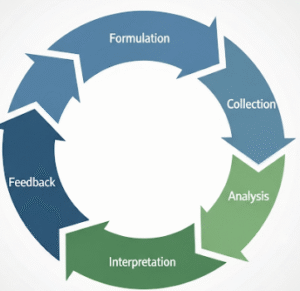- Metrics for Process and Products
- Software measurement
- Metrics for Software Quality
- Risk Management
- Reactive versus Proactive Risk Strategies
- Software Risks
- Risk Identification
- Risk Projection
- Risk Refinement
- RMMM
- RMMM Plan
- Quality Management
- Quality Concepts
- Software Reviews
- Formal Technical Reviews
- Statistical Software Quality Assurance
- Software Reliability
- The ISO 9000 Quality Standards
Introduction to software measurement
Software measurement is a fundamental activity in software engineering. It involves the process of deriving a quantitative value from an attribute of a software process or product. Essentially, it’s about assigning numbers or symbols to various characteristics of software. This systematic approach allows for objective assessment, moving away from purely subjective judgments. By quantifying different aspects, organizations can gain clearer insights, monitor progress, make informed decisions, and ultimately drive continuous improvement in their software development efforts.
Reasons for software measurement
There are several compelling reasons why software measurement is crucial in any development environment:
To Understand: Measurement helps teams gain a deeper and more objective understanding of the software process, the product being built, and the resources involved. It answers questions like “How efficient is our coding process?” or “What is the typical size of our modules?”
To Control: By measuring attributes, project managers can effectively control the development process. This allows them to identify deviations from the plan, intervene early to correct issues, and keep projects on track regarding schedule, budget, and quality.
To Plan: Quantitative data from past measurements provides a solid foundation for future planning. It enables more accurate estimations for new projects regarding effort, cost, and duration, based on historical performance.
To Improve: Perhaps most importantly, measurement helps in identifying areas for improvement. By analyzing trends and comparing current performance against benchmarks, teams can pinpoint weaknesses in their processes or product attributes and implement targeted changes to enhance overall efficiency and quality.
Principles of measurement
Effective software measurement adheres to a set of well-defined principles to ensure its reliability and utility. These principles guide the entire measurement process from start to finish:
Formulation: This initial step involves clearly defining what is to be measured and why. It means establishing a clear objective for the measurement, identifying the specific attributes, and determining the appropriate units of measure.
Collection: This principle focuses on systematically gathering the necessary data. It emphasizes the importance of consistent data collection methods, tools, and procedures to ensure accuracy and reduce variability.
Analysis: Once data is collected, it must be analyzed to extract meaningful information. This involves using statistical techniques, trend analysis, and other methods to transform raw data into understandable patterns and relationships.
Interpretation: Interpreting the analyzed data means drawing conclusions and insights in the context of the specific project or organizational goals. This step translates statistical findings into actionable knowledge that can inform decisions.
Feedback: The final and crucial principle is using the insights gained from interpretation to provide feedback. This feedback loop allows for adjustments and improvements to be made to the software process, the product, or even the measurement system itself, fostering a cycle of continuous learning and optimization.
These principles collectively ensure that software measurement is a disciplined and valuable activity, leading to tangible benefits in software development.
Conclusion
Software measurement is an indispensable practice that provides the quantitative backbone for effective software engineering. By systematically applying principles of formulation, collection, analysis, interpretation, and feedback, organizations can gain invaluable insights into their processes and product attributes. This data-driven approach enables them to understand current performance, control project trajectories, plan more accurately for the future, and continuously improve their software development methodologies, ultimately leading to higher quality and more successful software products.
